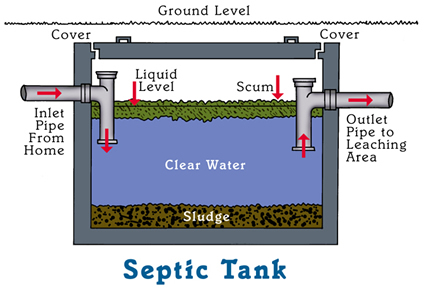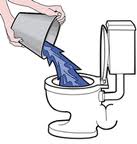Going With The Flow
Brett Ashton is a difficult man to pin down. I called his mobile one morning to discuss this article, only to be met with the reply “Sorry, I’ll have to do this another time – I’m in a nuclear power station”. As conversation-stoppers go, it’s a pretty good one so we rescheduled at a later date.
Of course the reason Brett can be so elusive is that he’s simply just so busy. As Engineering Supervisor for CSG and SepticTanksandCesspits.com, he brings an extensive knowledge of pumps and pumping – an ideal specialism as moving liquids is a mainstay of our services. He alternates his time, seemingly daily, between our Head Office in Fareham and any of a number of sites that he oversees.
(Caption – “Service and Maintenance team based at our Head Office in Fareham. Brett Ashton far left.)
“I’m really a troubleshooter”, he explains to me, when we find a more appropriate time to speak. “I carry out the surveys, examine the data, provide the quotes and source the parts. I do still get my hands dirty but I’m really here to pass on my knowledge when it’s required.”
Aged 32, he started his career in the Royal Navy, not uncommonly for a son of Portsmouth, and served for two years as an Engineer, mostly aboard HMS Manchester. Thereafter, he worked in London, maintaining pumps for a variety of clients: “hotels, department stores, fast-food restaurants; mostly heating systems but all pretty similar pumping requirements”.
For the last four years, he’s applied his specialist knowledge at the comapny. He patiently explains the rudiments of pumping: “you’re either looking to get the right level of flow (in litres per minute) or the right distance, which is represented as a curve on a graph. The complicated bit is when you need to move the curve with the current you have”.
Slowly, it dawns that ‘current’ and ‘flow’ are not interchangeable terms. ‘Flow’ refers to the liquid motion but the ‘current’ is of the electrical variety, the means of powering the whole operation. Brett casually confirms the realisation “I’m actually a trained plumber and a qualified electrician, which is funny really because usually, they don’t get on!”
Confident and yet self-effacing, he certainly doesn’t give the impression of a person given to internal struggle but his point is well observed – anyone who’s worked on a building site will know the two trades can be capable of mixing about as harmoniously as… well, electricity and water.
It’s certainly not a job for people who don’t like exams. Brett has had to undertake confined space training, is a qualified slinger and banksman and is UKPIA-accrediated to work on a forecourt. He’s recently added to this roster by taking a Level 2 & 3 City & Guilds qualification to bolster his electrician’s credentials. “It involved two years of travelling to London for weekends and a lot of A-level maths!”
Perhaps the most enviable aspect of Brett’s work is the wide variety of places it takes him to. Aside from his regular presence at that nuclear power station he’s reponsible for operations at schools, Forestry Commission sites, RAF barracks and even TV and Film Studios. As it’s a working studios, you have to check your mobile phone in at the front desk because there’s a strict ‘no photography’ policy – so there’s no chance of a selfie with any of the film stars you might come across!”
Occasional brushes with celebrity are nice enough but they pale in comparison to ensuring a job is well done. Brett explains how smarter technology is helping him to do exactly that. “Many of our pump stations now have a smart element to them. This means that not only do they monitor the levels and spot a fault, they can diagnose the problem and email the client and the team. Now, we often don’t need to send out an engineer to look at what’s going on, which is more efficient all round and saves the client money.”
Unsurprisingly, for someone so busy, Brett remains just as active outside of work. A black belt at karate at the age of 13, he also boxed for the Navy at Lightweight (60Kg). Running and weight-training burn off whatever excess energy remains at the end of the day.
Perhaps the most surprising part of our discussion comes when he declares he’s a big fan of rugby league, in particular the Leeds Rhinos. Portsmouth is a long way from the sport’s M62-corridor heartland and over 250 miles from Leeds so why the affiliation? “My Dad used to play for Leeds – when they were just called Leeds – so that’s the main reason but I’d still far rather watch a game of rugby league over union and I try to get up to Headingley to watch a game, when I can.”
What does the future hold for this rugby-league-supporting ex-serviceman of many talents? “I’ve always preferred to see money as a means to travel rather than just owning stuff and I would like to see more of the world but with a young daughter at the moment, we can’t be too ambitious”. It’s clear that, sooner or later, this elusive engineer is hoping to be even harder to pin down – for a few weeks of the year, at least!















